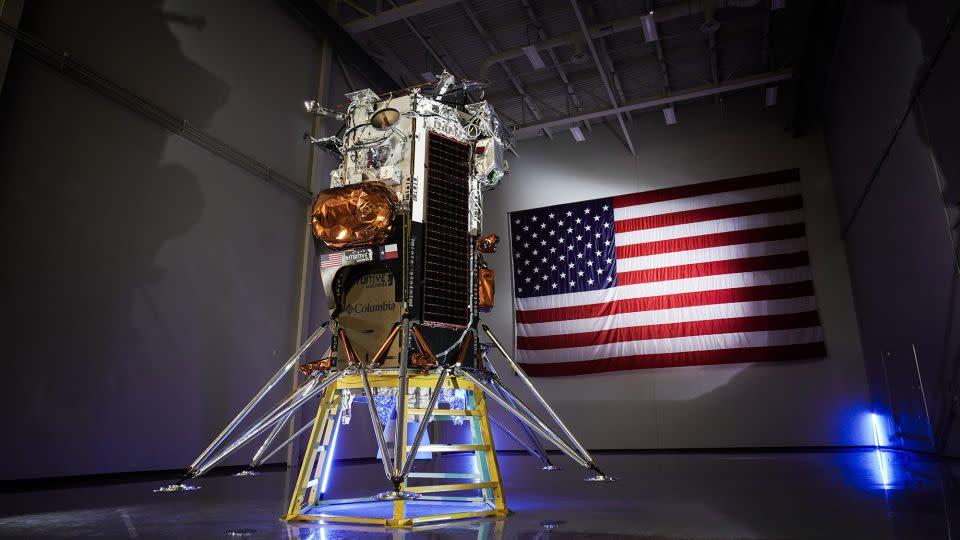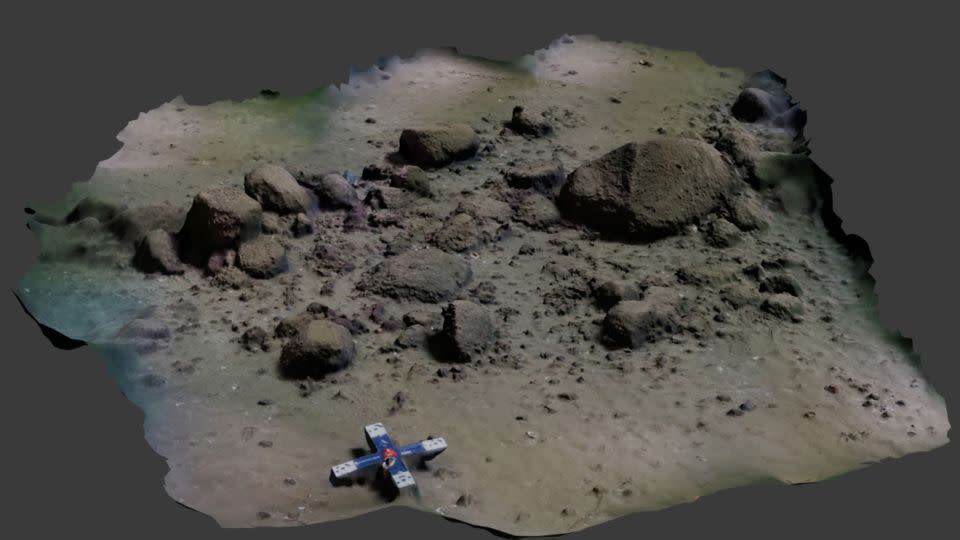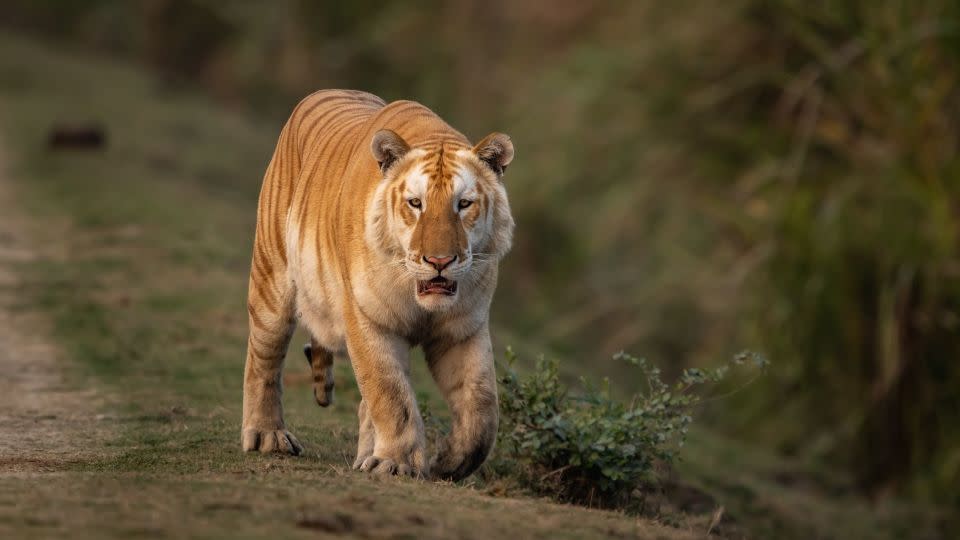New Odysseus lunar mission will attempt to make a historic landing at the moon’s south pole
- Oops!Something went wrong.Please try again later.
- Oops!Something went wrong.Please try again later.
Editor’s note: A version of this story appeared in CNN’s Wonder Theory science newsletter. To get it in your inbox, sign up for free here.
On July 20, 1969, the world watched as humankind landed on the moon for the first time.
But the perfect touchdown of the Eagle lunar lander by NASA astronaut Neil Armstrong was anything but easy.
As he and fellow astronaut Buzz Aldrin flew over the intended landing site, Armstrong looked out the window and saw a treacherous boulder field. Relying on his ace piloting skills, Armstrong manually navigated to a safe landing site, with only 30 seconds of fuel left.
After the lunar surface explorations conducted by the remaining Apollo missions, it’s been more than 50 years since the United States landed a spacecraft on the moon. Now, a new robotic explorer is on its way to attempt the feat.
Lunar update

After launching early Thursday morning, the Odysseus lunar lander, or “Odie,” is on a historic journey to the moon.
The mission, developed by NASA and Houston-based Intuitive Machines, will aim to land near the lunar south pole on February 22.
The spacecraft carries a camera system called EagleCam to capture its descent, an original sculpture designed in collaboration with artist Jeff Koons, and science and technology experiments that could help with future lunar landing missions such as Artemis III.
Curiosities
After naturalist Charles Darwin died in 1882, his impressive library began to dwindle, and its numerous books and pamphlets ended up elsewhere over time.
Now, the Darwin Project has virtually reassembled his library and its 7,400 titles after 18 years of painstaking research.
Researchers had to track down numerous previously unknown titles, resulting in “5,000 little detective stories” that helped them recreate his original collection, said project leader Dr. John van Wyhe, historian of science at the National University of Singapore.
Among the books were some surprising finds, including the last novel reputedly read aloud to Darwin before he died.
Ocean secrets

While surveying the seafloor of Germany’s Bay of Mecklenburg, a team of scientists made the unexpected find of an ancient sunken megastructure in the Baltic Sea.
The investigation, using diving teams and underwater robots, revealed a wall made of 1,670 stones that stretched for more than half a mile (1 kilometer).
Experts believe the wall served as one of the oldest known hunting structures from the Stone Age. The barrier was likely constructed about 11,000 years ago to help hunter-gatherers pursue reindeer amid the sparse landscape after the last ice age.
Separately, the wreckage of the SS Arlington, a bulk carrier that sank in 1940, has been found on the bottom of Lake Superior, but the discovery only solves one of the mysteries behind the ship’s sinking.
A long time ago
Researchers have pieced together the surprising story of Denmark’s earliest known immigrant from the Stone Age.
“Vittrup Man” was violently killed and thrown into a bog in Denmark 5,200 years ago, and his remains were first uncovered in 1915. By studying the bone collagen and teeth of Vittrup Man, scientists were able to establish a history of his geographical movements and diet.
Born and raised along the Scandinavian coast and subsisting on seafood, Vittrup Man suddenly crossed the sea to live and eat like a farmer in Denmark while still a teenager. He lived that way until being clubbed over the head between the ages of 30 and 40.
The team believes his brutal death may have been part of a religious sacrifice in the swamp.
Wild kingdom

The unexpected sighting of a rare golden tiger in India’s Kaziranga National Park provided an unusual experience for photographers in January. But conservationists see the animal’s appearance as a troubling sign.
The park is home to the largest tiger population in the region. Only a few golden tigers exist in the wild, and their distinct fur color comes from a genetic mutation, like “spelling mistakes in the DNA,” said Uma Ramakrishnan, a professor of ecology at India’s National Centre for Biological Sciences.
As migration routes close due to rapid development, isolation-induced inbreeding could make the park’s tiger population more prone to genetic mutations and diseases.
Meanwhile, a new landmark report warns that human interference could cause hundreds of Earth’s migratory species to go extinct.
Discoveries
Take a deep dive into these intriguing stories:
— The history of kissing is more complicated than it seems, but evidence from the ancient world shows humans have been romantically kissing for at least 4,500 years.
— A tiny surgical robot aboard the International Space Station successfully performed its first procedures on simulated tissue while surgeons remotely operated the device in Lincoln, Nebraska.
— A shallow, salty lake in British Columbia, called Last Chance Lake, could help scientists solve the mystery of how life appeared on Earth, and how it could form on other worlds.
— Nearly 2,000 years after it was laid, an intact egg found at an ancient Roman site still contains liquid inside.
Like what you’ve read? Oh, but there’s more. Sign up here to receive in your inbox the next edition of Wonder Theory, brought to you by CNN Space and Science writers Ashley Strickland and Katie Hunt. They find wonder in planets beyond our solar system and discoveries from the ancient world.
For more CNN news and newsletters create an account at CNN.com

